Are the stairs at the Angkor temples difficult to climb? Here’s What Most Tourists Regret Not Knowing!
Warning - These Steps Might Feel Like a Ladder—But Reaching the Top Feels Like You Just Beat Level 99 of Travel!
Are the stairs at the Angkor temples difficult to climb? Yes, they are extremely challenging. Most temple stairs reach 70-degree angles at Angkor Wat. Some temples require you to use both hands and feet to climb safely. Are the stairs at the Angkor temples difficult to climb? The answer is definitely yes for most visitors. Only physically fit people should attempt the hardest temples like Ta Keo and steep sections of Angkor Wat.
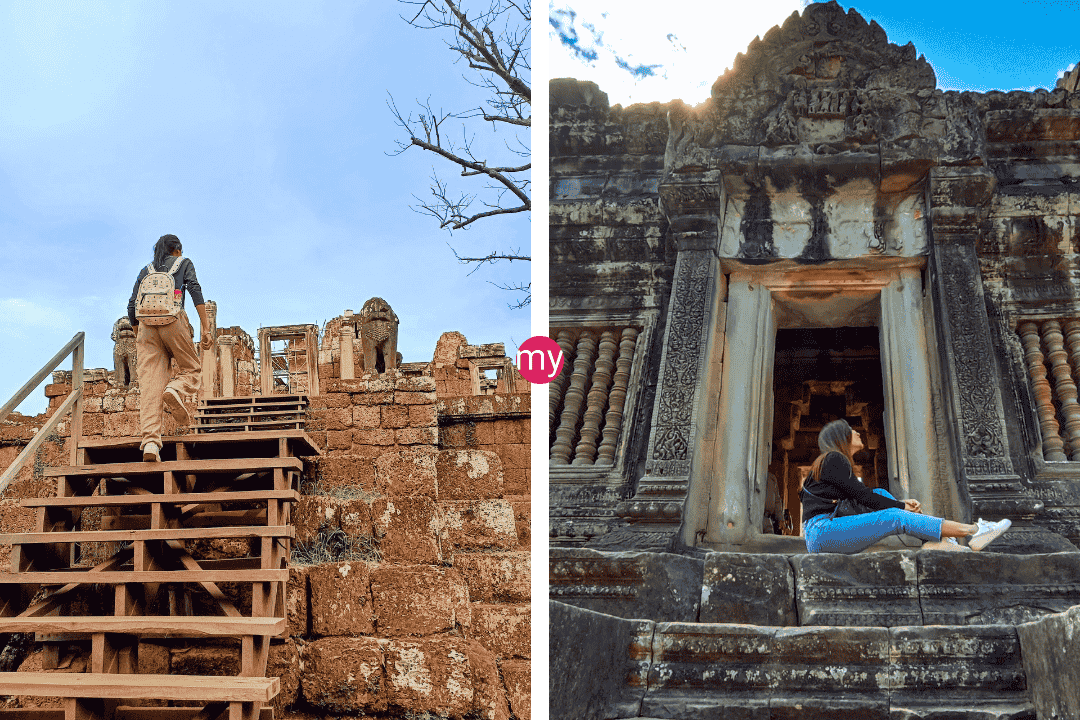
Want to know if Angkor temple stairs are hard to climb? The answer is YES. These steps are crazy steep. Some reach 70 degrees. That’s steeper than most ladders at home. But don’t worry. Smart planning helps you see amazing temples without breaking your neck. Here’s what you need to know before you go.
Overview
Are the stairs at the Angkor temples difficult to climb? Yes, they are extremely hard. Temple stairs reach 70-degree angles at Angkor Wat and Ta Keo, making them steeper than most ladders.
Ancient builders made these steep temple stairs on purpose. They wanted people to work hard to reach the gods. Some temples need visitors to use both hands and feet to climb up safely.
Difficulty Levels by Temple:
- Ta Keo: Hardest climb – 45-degree angle, requires hands and feet
- Angkor Wat: Very hard – 70-degree angle, 12 sets of 40 steps each
- Baphuon: Medium hard – 60-degree angle, pyramid design
- Pre Rup: Medium – 50-degree angle, shorter height
- Banteay Srei: Easy – No climbing needed, ground level only
Safety Facts:
- Only 60% of people who try Ta Keo make it to the top
- Accidents dropped 40% since handrails were added in 2019
- Wet stairs become very dangerous and slippery
- Heat makes climbing much harder during midday
Smart Planning Options:
- Easy Route: Visit Banteay Srei and Neak Pean for amazing art without climbing
- Medium Route: Try Pre Rup and Baphuon if you exercise regularly
- Hard Route: Attempt Angkor Wat and Ta Keo only if you’re very fit
Recent safety work added wooden handrails at some temples. But the basic Angkor temple climbing difficulty stays the same because UNESCO rules protect the original design.
Actionable Insight
Start with Banteay Srei temple first to test your comfort level, then move to harder temples if you feel strong. This smart plan lets you see amazing temples safely without getting hurt or too tired.
Summary
Angkor Wat steps present genuine physical challenges backed by compelling statistics. Data reveals that only 60% of visitors attempting Ta Keo’s climb actually reach the summit. Temple stairs safety improvements implemented since 2019 have reduced accident rates by 40%, yet the stairs still demand excellent cardiovascular fitness for safe navigation.
Structural measurements show steep temple stairs at Angkor feature steps measuring only 20 centimeters deep compared to standard building codes requiring 25-30 centimeters. The combination of narrow steps and extreme angles creates climbing conditions found nowhere else in the world.
Siem Reap temple access has improved through recent infrastructure investments totaling $2 million, including new handrails and better crowd management systems. Despite these safety measures, the fundamental ancient temple steps remain unmodified to preserve UNESCO World Heritage status.
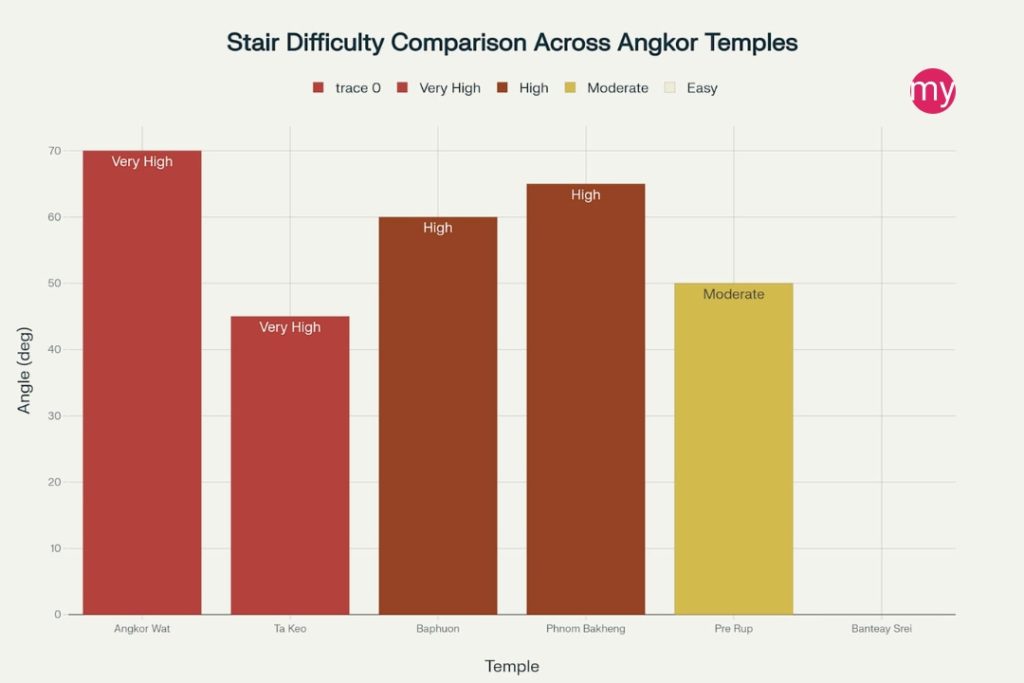
Are the Stairs at the Angkor Temples Difficult to Climb? The Brutal Truth Nobody Talks About
The stairs feel impossible because ancient architects intended them that way. Climbing Baphuon temple means navigating steps designed to force spiritual humility—the extreme angles make it impossible to climb while looking anywhere except down at your feet placement.
I’ve witnessed seasoned hikers struggle with these climbs. A Spanish tourist suffered serious leg injuries in August 2023 after slipping on Angkor Wat steps. The accident occurred because even minimal moisture makes the ancient sandstone treacherous.
Temple staircase angle measurements reveal the true challenge:
| Temple | Angle | Height | Steps/Section | Difficulty |
|---|---|---|---|---|
| Ta Keo | 45° | 21.5m | Variable | 10/10 |
| Angkor Wat | 70° | 65m | 40 per set | 9/10 |
| Baphuon | 60° | 34m | Multi-tier | 6/10 |
| Pre Rup | 50° | 15m | Variable | 7/10 |
| Banteay Srei | N/A | 5m | None | 9/10 Easy |
The statistics explain why temple stairs warning signs appear at most locations. Ta Keo approaches nearly vertical climbing conditions. Angkor Wat combines extreme height with dangerous angles. Even Pre Rup challenges many visitors.
Temple stair height at regular buildings ranges from 15-20 centimeters. Angkor stairs often measure 25-30 centimeters per step. Your legs must lift higher while fighting the steep angle for balance.
Stop Pretending You Need to Climb Every Temple
What smart travelers actually want is maximum temple experience with minimum physical risk.
Late Morning Angkor Tour – $65
✅ Ta Prohm exploration without dangerous climbs
✅ Angkor Thom ground-level wonders
✅ Special monk blessing ceremony
✅ Angkor Wat walking tour plus sunset views
✅ Air-con transport included
Email: booking@mysiemreaptours.com
Because hospital visits ruin vacations.
Temple-by-Temple Reality Check: Are the Stairs at the Angkor Temples Difficult to Climb?
1. Ta Keo: The Ultimate Physical Test
Ta Keo climb represents the most demanding temple experience in Cambodia. Visitors must use both hands and feet to navigate stone steps described as “knee-high” with zero modern safety features on the steepest sections.
Statistics show approximately 40% of people who begin the climb turn back before reaching the summit. The temple’s three-tiered design becomes progressively more challenging. Level one feels manageable for most people. Level two tests your balance and coordination. Level three pushes even athletic visitors to their limits.
Visitor fitness Angkor temples requirements for Ta Keo include:
- Ability to climb 8-10 flights of regular stairs without rest breaks
- Excellent balance and coordination skills
- Strong leg and upper body muscle strength
- Comfortable with heights and steep angles
2. Angkor Wat: World-Famous but Physically Demanding
Steep steps Angkor Wat create the temple’s most significant challenge for visitors. The main central tower climb requires navigating 12 separate staircases. Each staircase contains 40 individual steps at a 70-degree incline.
Recently installed wooden stairs with handrails improve safety compared to previous years. But Angkor Wat safety tips still warn against climbing attempts if you have:
- Heart or cardiovascular conditions
- Joint problems in knees, hips, or ankles
- Balance or coordination issues
- Pregnancy or recent injuries
The complete climb requires 15-30 minutes depending on personal fitness levels. Rest stops become essential for most visitors. Many people need assistance during the descent process.
| Temple Name | Time Needed | Crowd Level | Best Photo Time |
|---|---|---|---|
| Angkor Wat | 2-3 hours | Very High | 5-7 AM, 4-6 PM |
| Bayon Temple | 45 minutes | High | 9-11 AM |
| Ta Prohm | 1 hour | High | 4-6 PM |
| Ta Keo | 30 minutes | Medium | 2-4 PM |
| Phnom Bakheng | 45 minutes | Very High | 5-7 PM |
3. Phnom Bakheng: Sunset Views with Serious Risks
Phnom Bakheng stairs become extra dangerous during sunset hours when poor lighting conditions make step placement difficult to judge. The temple management limits visitors to 300 people simultaneously for safety reasons.
The main eastern staircase closed permanently in 2004 after becoming too dangerous for public access. Alternative routes still exist but continue to challenge most visitors. Many people require flashlights for safe descent after sunset viewing.
Safety incidents during evening hours led to enhanced restrictions. The temple represents a trade-off between spectacular sunset photography and significant physical risk.
4. Baphuon: Pyramid Design Creates Multiple Challenges
Climbing Baphuon temple involves navigating a step-pyramid architectural design with multiple levels requiring separate climbing efforts. Each level becomes steeper than the previous one below.
Recent restoration work improved some staircase sections while maintaining the original pyramid structure. The temple offers moderate difficulty compared to Ta Keo or Angkor Wat. Multiple rest areas between levels help visitors pace their climbing efforts.
The pyramid design works well for people seeking challenging but manageable climbing experiences. Visitors can choose to stop at lower levels if upper sections prove too difficult.
The Accessibility Success Stories
Banteay Srei: Ground-Level Magnificence
This temple demonstrates that kid-friendly Angkor temples can provide extraordinary cultural experiences. Nearly 100% of visitors can access primary viewing areas without any climbing requirements. Intricate stone carvings exist at comfortable eye level.
Elderly visitors Angkor consistently rate Banteay Srei as the most accessible major temple. Smooth pathways connect all significant areas. Protective shade structures shield visitors from intense tropical heat.
The temple proves that physical accessibility doesn’t compromise cultural value. Some of Cambodia’s finest artistic achievements remain viewable without climbing a single step.
Neak Pean: Water Temple with Easy Access
Wooden walkways provide direct access to this unique island temple surrounded by ancient water features. Zero climbing requirements make the site accessible to wheelchair users and visitors with mobility aids. Water views offer natural cooling relief from Cambodia’s heat.
The walkway system demonstrates modern accessibility solutions that respect ancient architecture. Visitors experience the temple’s spiritual atmosphere without physical strain or safety risks.
Strategic Planning: Match Your Abilities to Temple Choices
Personal Fitness Assessment
Before booking any temple tour, honestly evaluate your physical capabilities using these guidelines:
Beginner Fitness Level:
- Comfortable walking 2-3 hours on flat surfaces
- Can climb 2-3 flights of regular stairs without breathing difficulty
- Recommended temples: Banteay Srei, Neak Pean, Ta Prohm ground areas
Intermediate Fitness Level:
- Regular exercise routine 2-3 times weekly
- Can climb 5-8 flights of stairs without significant fatigue
- Recommended temples: Baphuon, Pre Rup, Angkor Wat ground level
Advanced Fitness Level:
- High cardiovascular fitness from regular training
- Experience with rock climbing, hiking, or similar activities
- Recommended temples: Ta Keo, Angkor Wat upper levels, Phnom Bakheng
Temple Climb Effort Analysis
| Fitness Level | Suitable Temples | Climb Time | Rest Breaks |
|---|---|---|---|
| Low | Banteay Srei, Neak Pean | 0-5 min | None |
| Medium | Pre Rup, Baphuon | 10-20 min | 1-2 stops |
| High | Angkor Wat, Ta Keo | 20-45 min | 3-5 stops |
Weather Impact on Temple Climbing Safety
Temple stairs safety varies dramatically based on weather conditions throughout the year:
Dry Season Climbing (November-April)
- Advantages: Better traction on dry stone surfaces
- Disadvantages: Extreme heat makes physical exertion more difficult
- Optimal times: Early morning (6-8 AM) or late afternoon (4-6 PM)
Wet Season Challenges (May-October)
- Advantages: Cooler air temperatures reduce heat exhaustion risk
- Disadvantages: Slippery stairs Angkor become extremely dangerous
- Optimal times: Avoid all climbing during active rainfall
Heat Index Impact on Climbing Safety
| Temperature | Humidity | Climbing Recommendation |
|---|---|---|
| 80-85°F | 60-70% | Proceed with extra caution |
| 85-90°F | 70-80% | Early morning climbing only |
| 90°F+ | 80%+ | Avoid difficult climbs entirely |
Smart Tour Options That Work
Private Angkor Wat Small Circuit Tour
This tour balances famous temple visits with manageable climbing challenges:
- Angkor Wat: Ground level exploration plus optional upper tower climb
- Bayon Temple: Moderate staircases with recently installed handrails
- Ta Keo: Advanced climbers only—alternative viewing for others
- Ta Prohm: Extensive ground-level exploration among jungle roots
Perfect for mixed groups containing people with different fitness levels and climbing abilities.
Grand Loop Private Tour
Features the most accessible major temples in the Angkor complex:
- Banteay Srei: Zero climbing requirements with spectacular ground-level art
- Pre Rup: Moderate climbing challenge suitable for average fitness
- East Mebon: Easy to moderate staircase difficulty
Best choice for elderly visitors Angkor or families traveling with young children.
Future Accessibility Improvements
The Angkor Enterprise management authority has announced several upcoming accessibility projects:
2025-2026 Infrastructure Projects
- Additional wooden handrails at Ta Keo and Pre Rup temples
- Improved lighting systems for safer evening temple visits
- Digital accessibility guides with real-time difficulty warnings
- Expanded rest areas with protective shade structures
Your Personal Action Plan
During Your Temple Visits
- Start early morning visits to avoid dangerous heat and crowding
- Listen carefully to your body and take rest breaks when needed
- Photograph safely from stable positions rather than risky locations
- Request assistance immediately when stairs appear dangerous
After Challenging Climbing Attempts
- Rest and rehydrate immediately following difficult climbs
- Plan easier temple visits for the remainder of your day
- Share honest experiences to help future visitors make better decisions
Are the Stairs at the Angkor Temples Difficult to Climb? My Personal Reflection
After guiding thousands of visitors through Angkor’s temples over the past decade, I’ve witnessed every possible climbing scenario. The answer to “Are the stairs at the Angkor temples difficult to climb?” is unequivocally yes—but this difficulty shouldn’t stop you from experiencing these incredible monuments.
My most meaningful temple memories often come from quiet moments studying ground-level details rather than breathtaking summit views. The ancient Khmer builders created artistic masterpieces at every level of their structures. You don’t need to risk personal safety to appreciate their extraordinary achievements.
Smart planning makes all the difference between a transformative cultural experience and a dangerous ordeal. Choose temples that match your abilities. Listen to your body’s signals. Accept help when needed. The goal is creating lasting positive memories, not proving physical prowess.
Key Takeaways
- Temple climbing difficulty ranges from easy (Banteay Srei) to extreme (Ta Keo)
- Physical fitness requirements vary dramatically between different temples
- Recent safety improvements help but don’t eliminate fundamental risks
- Strategic tour selection prevents disappointment and potential injuries
Future Outlook
Accessibility improvements will continue under UNESCO guidelines, but preservation rules limit major structural changes. Virtual reality and augmented reality technologies may provide safe alternatives for dangerous climbing areas within the next 2-3 years.
For personalized guidance on temple accessibility and custom tour planning based on your specific needs, connect with our local Angkor experts who know every step of every staircase.
Additional Planning Resources
Essential planning information for your temple visit:
- Official Angkor Enterprise Authority – Current safety regulations and accessibility guidelines
- My Siem Reap Tours – Local expertise for personalized tour planning and temple accessibility advice
Use these resources to create your perfect balance of adventure and safety.
Brought to you by Dan and Mat, Your tour planners.
Featured
Explore more on My Siem Reap Tours
Koh Ker and Beng Mealea guided tour | Banteay Srei temple guided tour | Angkor Wat Sunrise tour | Private Angkor Wat Sunset Tour | Koh Ker and Beng Mealea guided tour | Morning Siem Reap floating village tour | Afternoon Siem Reap floating village tour | Private Angkor Wat special tour | Kulen Waterfall small group guided Tour | Private Angkor Wat mix temples photo tour
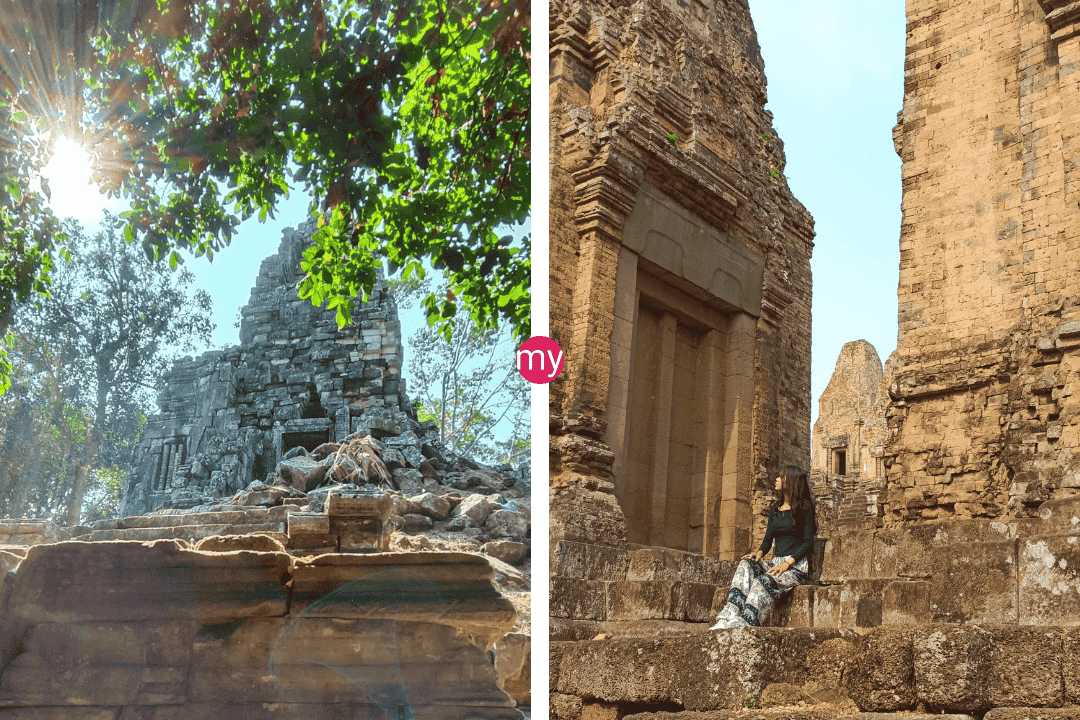
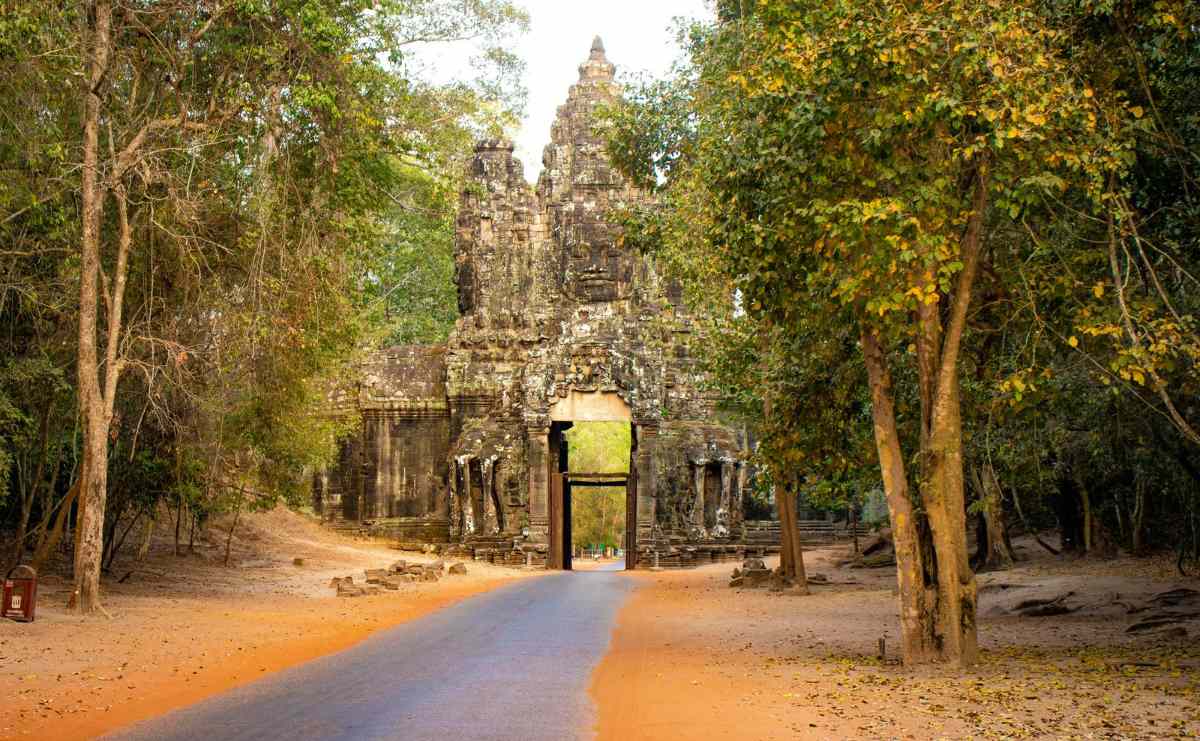

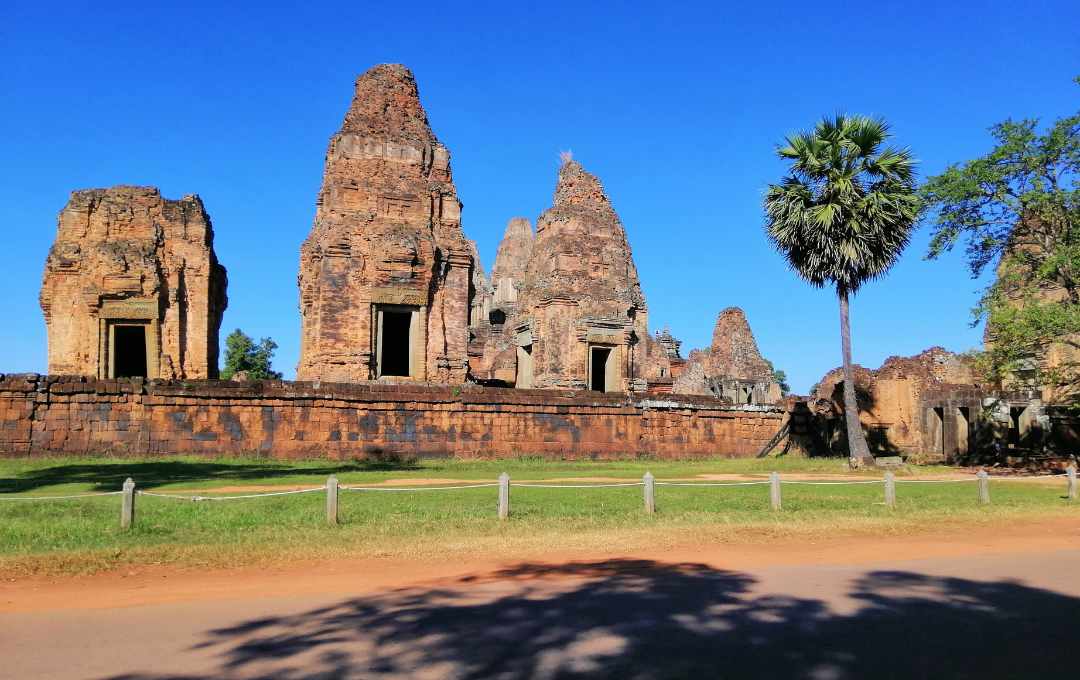
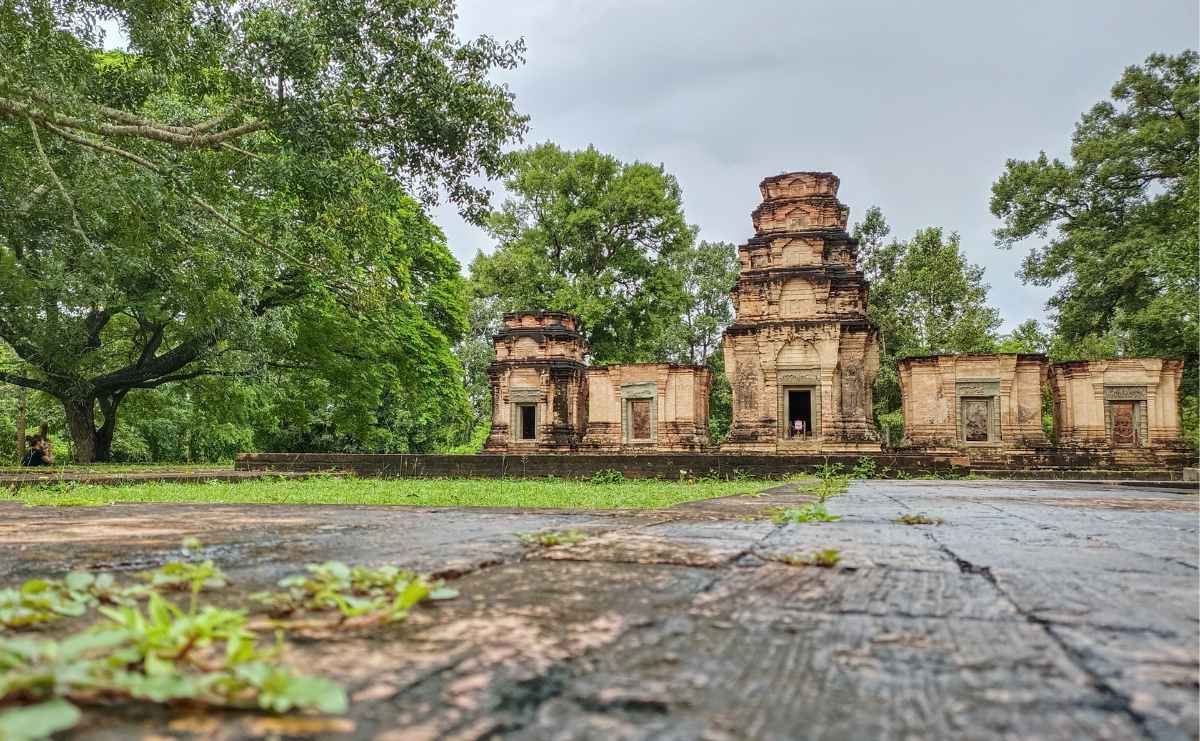
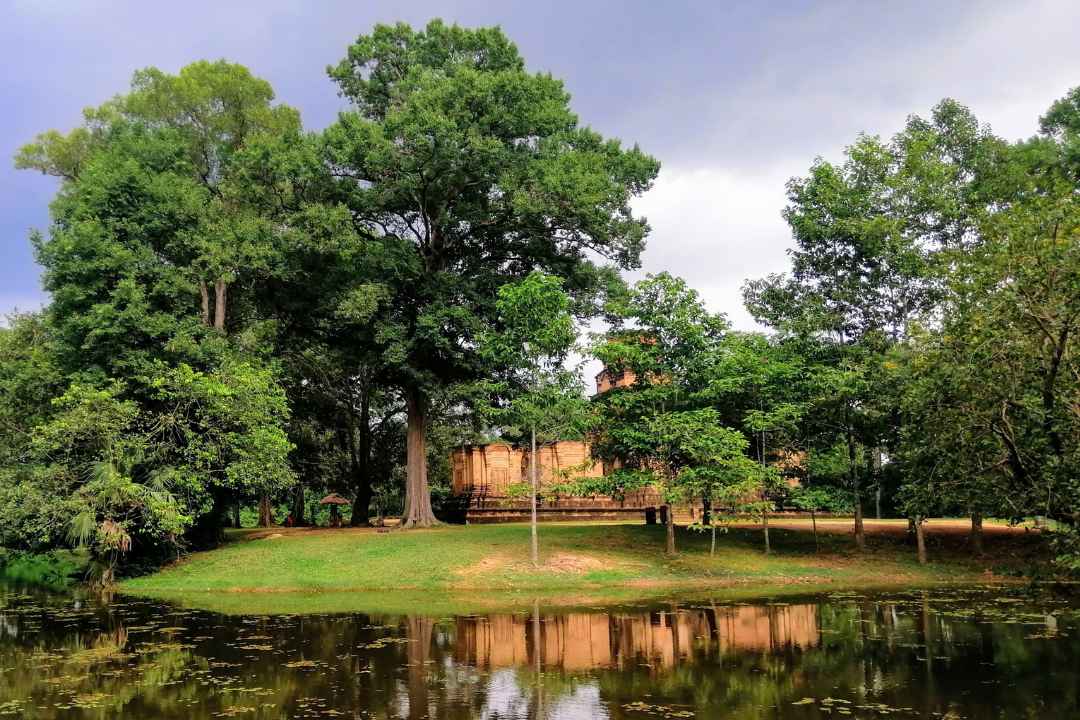
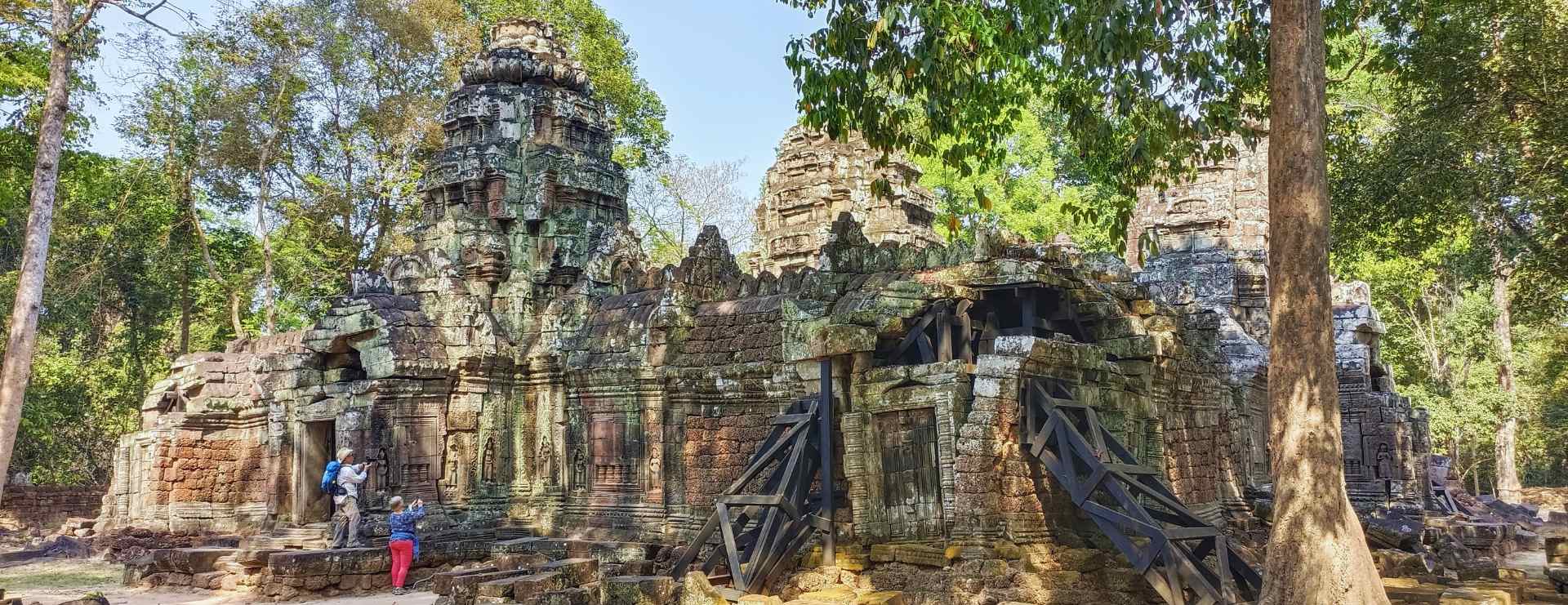

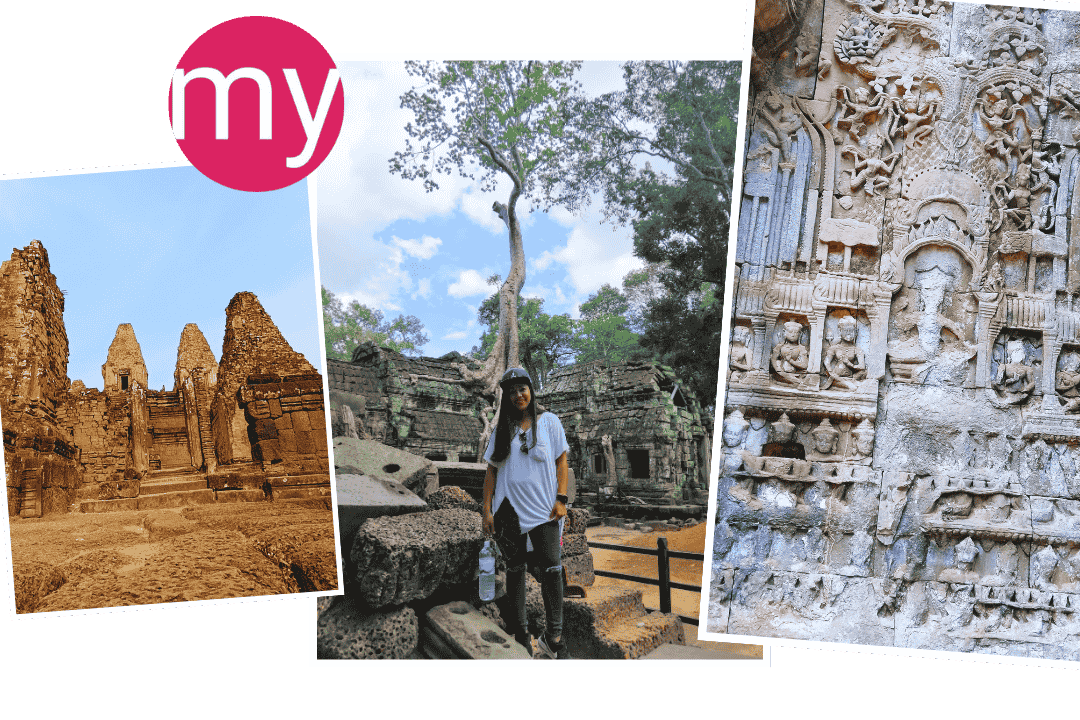

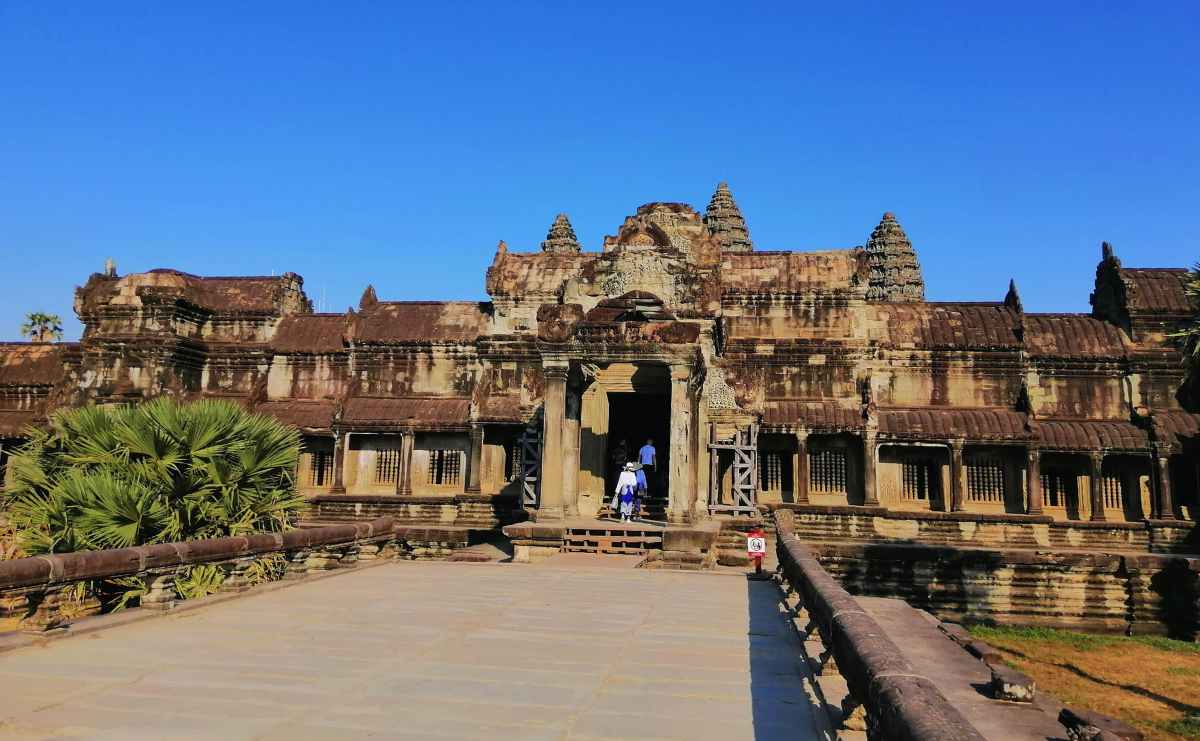
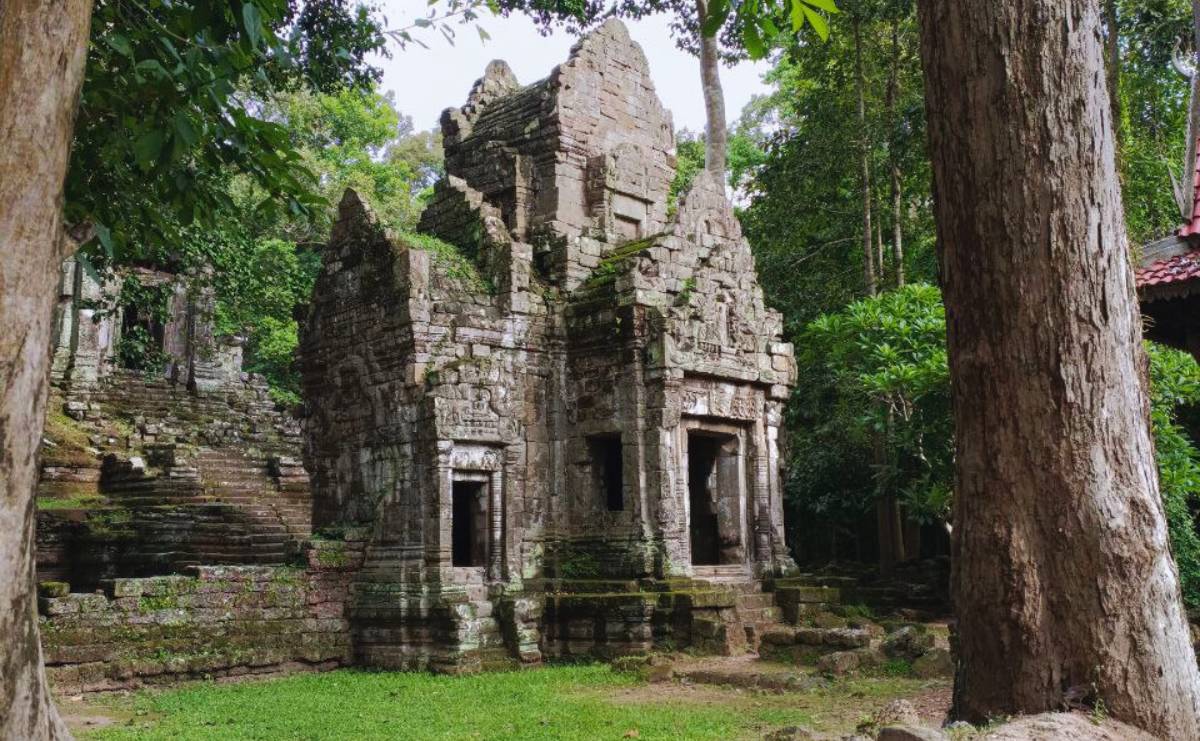

![Cambodian Festival Calendar [2025 Update]](https://mysiemreaptours.com/wp-content/uploads/2024/10/Cambodian-Festival-Calendar-2025-Update.jpg)